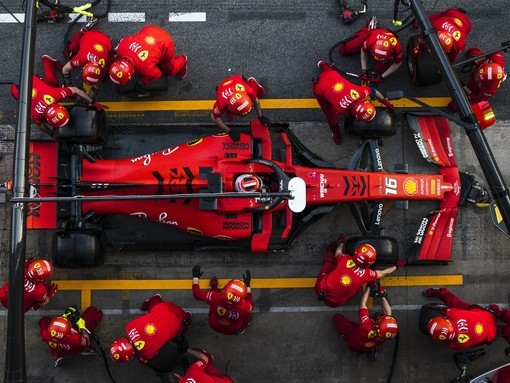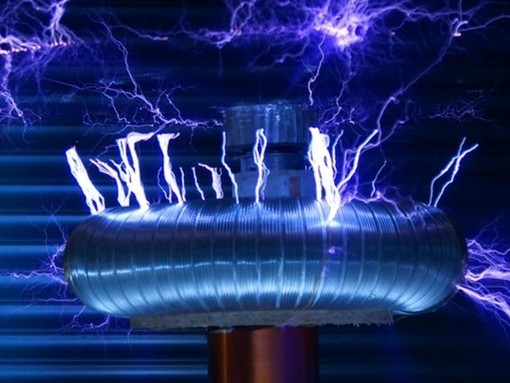
Unveiling the engineering marvel: Building the Las Vegas F1 circuit
Contents
The most recent addition to the track selection for the Formula 1 World Championship, the Las Vegas circuit, will host its second ever race at the end of November 2024. But how do engineers turn one of the most famous strips of road in the world into a race-ready Grand Prix track?

The Las Vegas circuit appeared on the F1 calendar for the first time to much fanfare as the penultimate race of the 2023 World Championship. Seen as the showpiece race among the five that currently take place across the continent of North America, there was a lot of pressure to deliver an on-track experience that rivalled the spectacle taking place off it.
To achieve this, there was an abundance of engineering expertise and innovation that went into the building of the huge 3.8-mile track through the heart of the city. Our latest blog features exclusive insights on the meticulous construction process behind the circuit, showcasing the expertise and innovation required to bring such a high-profile project to life.
Transforming the roadway
The first and arguably most important decision that specialists had to make was where the track was going to be – and given the lack of space in Vegas, there wasn’t much wiggle room. The 3.8-mile track primarily utilised public roadways, with only two of the track’s sections lying on private property. This meant that crews had to upgrade approximately 3 miles of existing public roads to meet the rules and regulations of the F1’s demands, which included repaving and ensuring appropriate density to support the high speeds of the cars as well as cornering.
Asphalt composition
Special attention was paid to the composition of the asphalt, which included numerous rounds of batch testing to determine the appropriate mix of bitumen and binder. The goal was to create a dense base and a final racing surface that was capable of withstanding the huge amounts of force that are exerted by F1 cars. But the engineers not only ensured the asphalt was fit for just the one Grand Prix – it’s estimated that the newly laid track will be able to withstand up to a decade of racing, with everyday traffic also passing over it within that time.
Safe and sound
The Vegas track needed to be lined with safety measures double the size of the racing area – meaning almost 7.6 miles of 7,000-psi density concrete barriers were added around the track. The barriers, each 26 inches wide and 3 feet tall, locked into one another to secure both the racers on the track, and the excited spectators watching on. Officials also ensured a steel cage debris fence was inserted into each block of the barriers, with additional steel for maximum protection.
Balancing public access
Given that the track utilised public roadways, arrangements had to be made to allow access during non-racing times, outside of the hours of qualifying, the sprints, and the race. Crews established 26 different access points to open the track for public use between racing sessions, to ensure seamless transitions.
On top of this, when the F1 cars do take over the road space, they will only be driving on just one side of the highway – which may not sound like a great deal of track room, but still ranges to almost 50 feet in width.
The Paddock
Despite the intricacies of engineering a removable track, there was one element that would remain in Las Vegas all year round – The Paddock. Constructed over 39 acres of land, The Paddock serves as the central hub for the Grand Prix – housing pit garages, club and event spaces, and a control tower. It features floor-to-ceiling glass along the pit lane and balconies for spectators to view the action from a higher point, capturing the streets of Vegas as they do so.
One standout feature of The Paddock building is a 28,000-square-foot LED screen in the shape of the F1 logo – serving as a signature landmark for the event. With its innovative design and cutting-edge amenities, the paddock building stands as a testament to an unwavering dedication to excellence in engineering.
The challenging role of F1 Engineers
Creating such a prominent feature in one of America’s largest entertainment hubs was far from easy – with the F1 engineers facing numerous challenges along the way. The main issue the construction site presented was a significant elevation change – but engineering solutions were implemented, including infilling and the creation of tunnels, to ensure that fan circulations and sightlines were maintained. All elements required crucial planning and staying within the FIA guidelines – from the lights around the track, to the balconies in The Paddock.
Kickstarting your F1 engineering career
To embark on a career as a Formula 1 track engineer shaping the circuits for future F1 races, you’ll require a degree in civil engineering or a related field, coupled with a deep understanding of design software and principles such as structural, environmental, and materials engineering. However, simply having the qualifications won’t guarantee you a spot in the F1 track team. Much like being one of the two drivers selected in each team, Formula 1 track engineering is incredibly competitive; demanding exceptional talent and dedication to stand out.
If you’re a recent graduate or currently pursuing your degree, it’s advisable to explore opportunities for internships or voluntary work in motorsport, focusing on track design and management. After gaining valuable experience and obtaining your degree, many engineers begin their careers in junior roles within motorsport, often starting as track inspectors or assistant track engineers in lower-tier racing series such as Formula 3 or Formula 4.
Our automotive recruitment experts have a wealth of experience and knowledge. With the freedom to think differently, our diverse team works in partnership with organisations and candidates, harnessing the latest technology to build teams and source niche skill sets. Find out more here.















